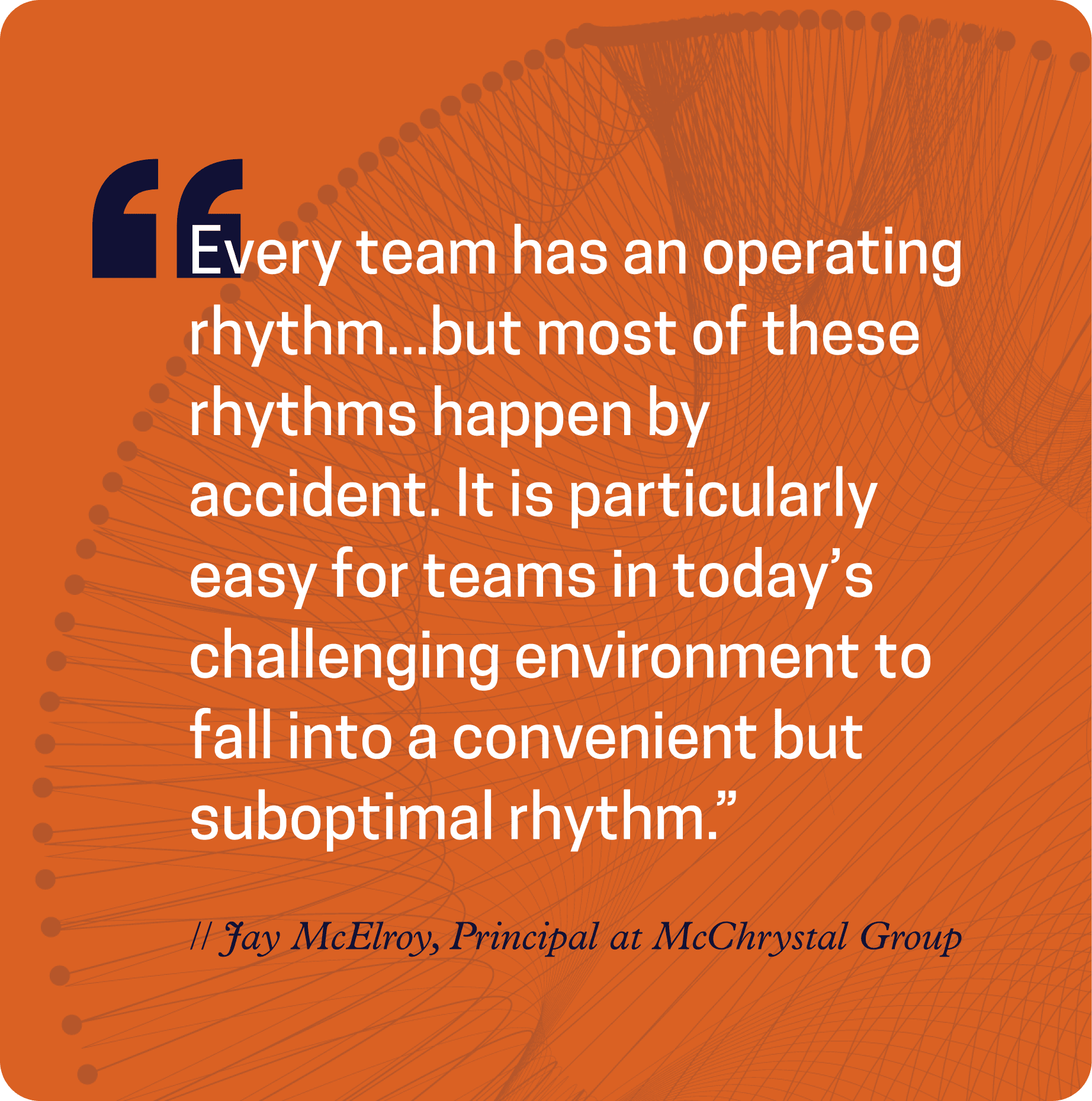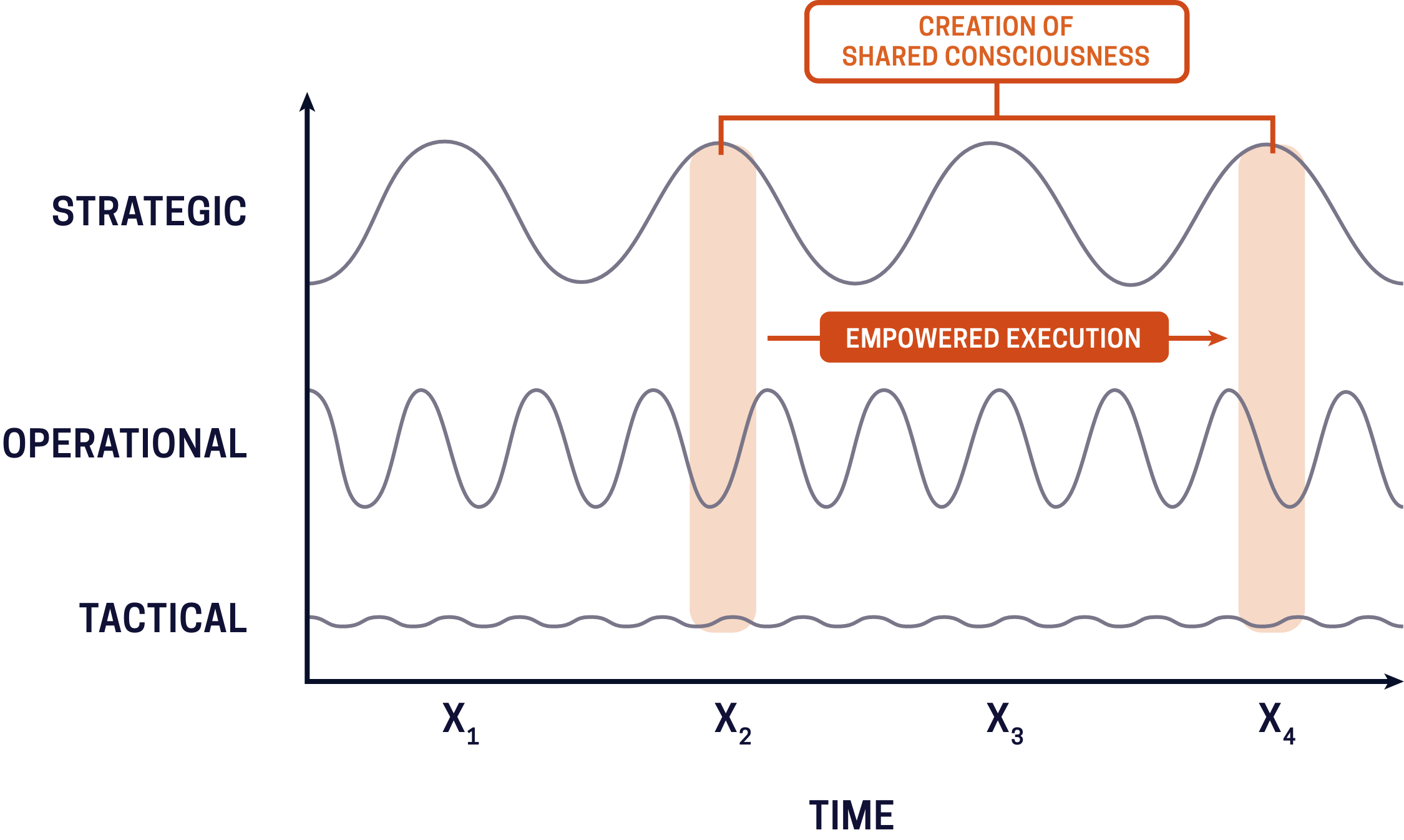With over 30 years of experience surfing around the world, I often find myself explaining my passion to non-surfers. Their typical response is one I’ve heard dozens, if not hundreds, of times: “Aren’t you afraid of sharks?”
Contrary to popular belief, the threat of sharks rarely crosses a surfer’s mind when I'm in the water. The real danger, the one that demands my constant attention, is not marine life. It’s me.
The same dynamics apply to executive teams: when alignment is off, when coordination fails, the greatest threats are internal, not external.
About 67 percent of surfing injuries occur from hitting your own surfboard or someone else’s. Board strikes regularly result in broken bones, lacerations, and unconsciousness. On land, these injuries can be serious, but when you are surrounded by water and getting pounded by waves, they can be deadly. And just like in business, the greatest risks to performance often come not from external threats but from within.
Just as surfers must be deeply aware of themselves, the ocean, and other surfers, high-performing teams require shared consciousness: a networked awareness that connects individual actions to team-wide outcomes.
To reduce risks and catch waves, surfers follow strict yet simple rules that apply to everyone in the water on any given day, much like how teams operate together, even if there are interchangeable parts. Offshore, highly choreographed masses of surfers operate in near-perfect synch with each other, the environment, and themselves to catch waves using clear, concise, and consistent communication.
The person closest to the wave's crest commands the right of way over all other surfers in the lineup. Just as the priority surfer has the authority to go or call off based on frontline judgment, empowered execution enables those closest to the problem or opportunity to act without waiting for permission. It’s a hallmark of the Team of Teams® approach: decentralized decision-making rooted in trust and common purpose.
This real-time coordination in the water mirrors shared consciousness—the ability for individuals to make decisions with the same context and clarity as the leadership, because they are plugged into transparent, continuous communication.
Priority Surfers communicate their intent to avoid a collision or risk losing the wave of the day. This communication can take many forms. Sometimes, it’s directional, such as yelling, “Going right!” or “Going left!” to indicate which way you are traveling on the wave. Other times, it might involve hand signals or eye contact to ensure that everyone in the vicinity understands their intentions. Clear communication is crucial in these moments to maintain safety and harmony in the lineup, allowing surfers to enjoy their ride while minimizing the risk of accidents.
The simple rules and timely communication of surfing are the perfect metaphor for the importance of an effective operating rhythm. Surfing is often used as an analogy for business, leadership, and resilience by top executives and world leaders. Founder of the Virgin Group, Richard Branson, often uses surfing metaphors to describe his approach to business, emphasizing the need to ride the waves of change and innovation. Former U.S. President Barack Obama, who is known to love body surfing, has used surfing metaphors in speeches to illustrate concepts of balance, resilience, and navigating challenges.
The ability of people to harness the power and unpredictability of the ocean mirrors the skill required to navigate the volatile and complex landscape of today's business environment. As surfers must anticipate and respond to shifting waves, leaders must stay attuned to market trends, adapt to new information, and maintain steady communication through an effective operating rhythm.

“Every team has an operating rhythm—the habitual cadence in which the team meets, shares information, and disperses to get work done—but most of these rhythms happen by accident,” says Jay McElroy, a Principal at McChrystal Group. “It is particularly easy for teams in today’s challenging environment to fall into a convenient but suboptimal rhythm.”
Just like the ocean, with its shifting tides and unforeseen hazards, organizations and their leaders today must constantly adapt and respond to changes in the environment. Internal processes used to manage an organization’s operating rhythm must keep pace. An operating rhythm is the consistent cycle of meetings, updates, and touchpoints that ensure strategic clarity, enable team coordination, and surface risks early.
“Circumstances may dictate the exact frequency that suits your team, knowing that you cannot design an operating rhythm until you look outward and answer, ‘What outcomes should my operating rhythm enable?’” McElroy says.
Team of Teams emphasizes the shift from rigid processes to dynamic systems. Operating rhythm is no longer just a meeting schedule—it’s the cultural heartbeat that connects strategic intent with frontline agility. Like the rhythms of the ocean, it must adapt in real-time.

An operating rhythm allows surfers to make split-second decisions on whether to go or not go based on the environment and the established rules.
In the workplace, an effective operating rhythm enables those closest to the problem to solve it or those nearest to the opportunity to capitalize without asking for permission.
This can mean the difference between organizational success and failure. That may seem dire, but it’s true. Employees can’t effectively respond to threats, overcome challenges, or execute a strategy they don’t understand or aren’t empowered to act on.

This may seem like a no-brainer, but a McChrystal Group study found that only 53% of employees receive routine updates on organizational objectives.
Operating rhythm connects the strategic, operational, and tactical to ensure a common purpose and empowered execution at all levels. Traditional top-down organizational structures can effectively cascade information when there are no threats and very little competition in the environment, but that is not today’s reality.
While surfing appears fluid and instinctual, it’s built on practiced rhythm—just like the best teams operate on deliberate but flexible cadences that connect strategy to execution. This alignment is at the heart of the Team of Teams® framework. At its core, Team of Teams® helps organizations become more adaptable and resilient by combining shared consciousness with empowered execution. It is a leadership framework developed to help organizations excel in complexity by combining networked communication with decentralized execution.
“All of us are surrounded by network threats that operate differently,” says Meghan Bourne, a Partner at McChrystal Group. “Organizations also need a communication structure that allows senior leadership, mid-management, and frontline employees to all synchronize at the same time to understand what’s going on across their environment.”
Not all threats and opportunities in the lineup come at the wave’s peak, and surfers have a communication structure to capture and communicate information about challenges and opportunities on the horizon.
Occasionally, someone yells, “Outside!” warning fellow surfers of an incoming rogue wave or set of waves. Without hesitation, surfers will turn and scramble for the horizon to either catch one of the waves or avoid being drilled by one. Informal alerts often surface risks before formal systems catch up.
Multiple communication pathways are vital for a truly effective operating rhythm. One manages linear problems and opportunities, while another identifies threats and opportunities on the horizon or the frontline. This informal, lateral communication reflects a critical Team of Teams® lesson: frontline alerts often surface threats faster than traditional hierarchies can. An effective operating rhythm institutionalizes this cross-level, cross-functional awareness so the organization can respond in time.

These pathways are vital to aligning operating rhythm with the environment and making timely decisions. McChrystal Group research shows that organizations struggle to make effective decisions. Only 33% of employees our researchers surveyed said that organizational decisions were made in time for effective execution.
Even in a perfect world, organizations will not capitalize on every opportunity or occasionally stumble when challenged. Even the best surfers wipe out, but they learn from each fall and paddle back out for another wave. An effective operating rhythm incorporates mechanisms for review and feedback, ensuring that lessons are learned and improvements are made.
It’s considered poor form in the surfing community to “kook shame,” a term surfers use to mock poor or unsafe technique. However, surfers commonly offer assistance and knowledge to create a safe lineup and grow surfing’s next generation. This may be one of the most important lessons of surfing and effective operating rhythm. Embracing failures as stepping stones indicates a learning organization fostering innovation, continuous improvement, and psychological safety.
In Team of Teams environments, psychological safety isn’t just a benefit—it’s a prerequisite for adaptability. Trust fuels transparent feedback and accelerates learning. Like surfers sharing tips in the lineup, teams that coach each other without ego build the resilience needed to thrive in unpredictable conditions.
“In an atmosphere where learning is more important than egos, it feels safe to share feedback with others, including constructive criticism for leaders about improvements or changes,” says Nicole LeFort, a Senior Learning Designer at McChrystal Group. “It’s okay to admit mistakes, be vulnerable, and speak truth to power."

Organizations face numerous hardships in today’s uncertain world. Like a surfer’s board, many dangers facing modern organizations come from within. An effective operating rhythm allows organizations to reduce the risks posed by these dangers, turn challenges into opportunities and ride the wave of success.


